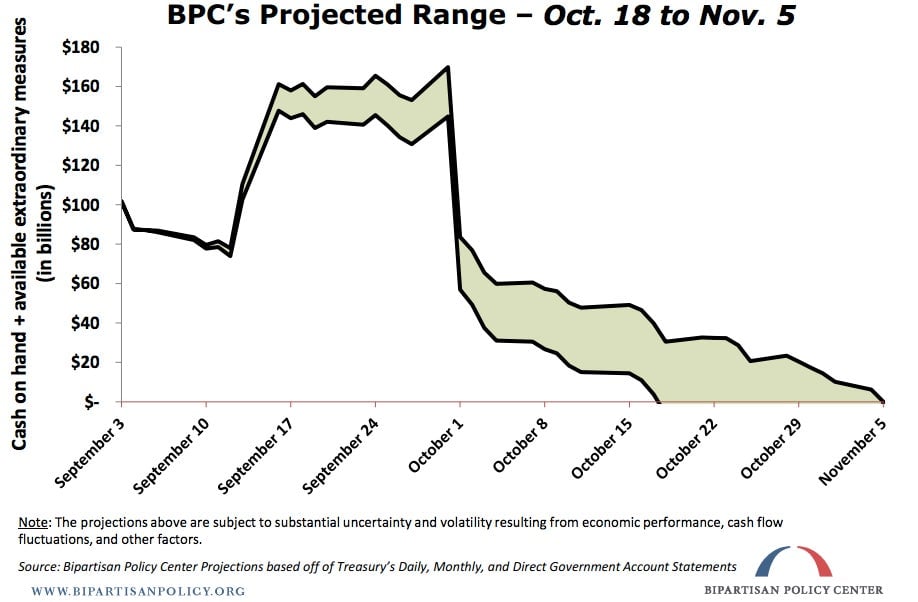See the United States running out of cash in this scary chart
With so much focus in the US on Syria, where even US president Barack Obama says there is no immediate threat to American interests, it might be worth re-focusing for a moment on this chart from the Bipartisan Policy Center. It shows the government’s supply of cash running out sometime between October 18 and November 5—a serious threat not just to the US but also to the global economy:

With so much focus in the US on Syria, where even US president Barack Obama says there is no immediate threat to American interests, it might be worth re-focusing for a moment on this chart from the Bipartisan Policy Center. It shows the government’s supply of cash running out sometime between October 18 and November 5—a serious threat not just to the US but also to the global economy:

The US reached its public debt limit on May 19 after Congress reinstated it following a brief suspension. The ceiling is now $16.669 trillion, though only a little more than $10 trillion of that debt is held by the public. To help keep the free cash flowing, the Treasury has adopted “extraordinary measures,” which mainly consist of holding off on the reinvestment of certain government funds in Treasury securities so that it can continue offering them to the public. Those measures only created limited space for new borrowing, though. While the expanding economy has increased tax revenue, government obligations scheduled for October, including the accrual of military benefits and public pension payments, will likely leave the US without cash, according to the Bipartisan Policy Center’s analysis.
In that case, either Congress raises the legal borrowing limit in time for a refinancing, the US defaults on its debt with disastrous consequences, or things get entirely weird. One thing’s for sure: An uncertain process around lifting the ceiling will upset markets.
The good news is that US borrowing this fiscal year is set to be $400 billion lower than last year, and next year will be even lower, around 3.4% of GDP, putting the US on a path to reduce its publicly-held debt over the next decade. That should be a good incentive for an agreement to raise the debt limit (why sabotage the government over debt when debt is already going down?). But political conflicts mean that any agreement will be accompanied by sturm und drang.